No really; this show is unstoppable. And by that, I mean that once you get going with it, you lose the physical ability to stop watching. Sure, after Season 1, I had my hesitations about even continuing with Starz’s swashbuckling drama, but Season 2 is among the best TV I’ve ever watched, and Season 3 kept up the pace.
Now look, off the bat I want to be clear that I don’t think Black Sails gets everything right, like it’s some kind of Jessica Jones. This is not the pinnacle of intersectional feminism in terms of the story told and its presentation, and I don’t think it exactly tries to be. As far as I know, its only aim is to be a prequel to Robert Louis Stevenson’s Treasure Island. There’s also some disheartening behind-the-scenes aspects, such as the dwindling down of female writers as the seasons have gone on (and total lack of female directors), not that dudes can’t do a great job writing women, or that women are automatically feminists. Still, I don’t want to make an attempt to hide/excuse these issues, or fool you into thinking you’re going to be watching an “adult” Steven Universe simply because of how much I’m gushing. But in my opinion, this is why there’s a value to allowing ourselves to both enjoy and analyze “problematic faves”; it creates an engaging forum in which we can discuss major storytelling and social issues.
So with that caveat, let me briefly list what this show does well:
- Every character is morally grey. It’s not that you can’t root for anyone, because you can. But each situation is complicated, and since many/most of the “good guys” are pirates or fences, there’s an inherently troubling aspect to the situations that the characters navigate and the things they want to accomplish.
- You will care about everyone. Actually care. I don’t know how the show does it, but it provides enough backstory for each character so that you understand where they’re coming from. Even those you can’t empathize with will at least garner sympathy, and before you know it the people you hated in Season 1 will be making you want to ugly cry in Season 3. Heck, I don’t even want bad things to happen to the characters I’m incredibly frustrated with!
- The show is coherent. I don’t know why this needs to be said, but I’ve seen what just won the “Outstanding Drama Series” Emmy, so it’s worth pointing out. There’s one or two things that you could say, “ah, this feels a little contrived,” and perhaps a few too many almost-deaths/saved-at-the-last-minute moments, but in terms of plot-holes or anything that really violates suspension of disbelief…I’m still waiting.
- The show is fun. Yes, I realize this is quite subjective, but the thing is literally a swashbuckling high-seas adventure with mild political intrigue. It’s pirates, guys. Pirates! It’s Long John Silver and Captain Flint tiptoeing around a Spanish warship while the crew sleeps in a desperate ploy. It’s Jack Rackham managing a brothel with Anne Bonny yelling at him for being an idiot. Come on!
- While not perfect, the show does make an honest attempt to explore women’s issues, slavery in 1715 and its ramifications, LGBT+ issues, and colonialism. There’s parts it could improve upon and a few troubling tropes it didn’t probably need to employ along the way, but it is told with what seems to be a sensitivity and a real effort to place the agency in the hands of the marginalized characters, correcting its biggest stumbling block in Season 1.
- Season 4 will be its last season. This seems like an odd thing to put in this list of positives, but I have such respect for shows that are carefully planned out, have an end-point, and stick to it, rather than letting something drag on and on. The showrunners seem to have a clear vision of where this is headed.
If you haven’t watched the show and this sounds appealing to you, seriously, don’t wait. If you have watched the show, or you don’t mind knowing what’s going to happen, then I’m going to dive a little deeper. But be warned, from here on out are explicit spoilers for all aired episodes of Black Sails.
The Good
Anne Bonny
Let me just say, I fully, 100% understand that Flint the anti-hero/villain protagonist (it vacillates) and his tragic backstory *should* be the first thing I list here. But if I’m being truly honest with myself, my absolute favorite part of Black Sails comes in the form of a troubled, disturbingly violent, often insensitive, and usually antagonistic lady-pirate. I mean, it’s bad, guys. She’ll outright murder someone and I’ll be like, “good for you, Sweetie!”

Follow your dreams (ノ◕ヮ◕)ノ*:・゚✧
I can’t exactly say why, and I really never thought of myself as the kind of person who’d be taken in with an “angry smol”. I know a good part of it is because we (very briefly) learn of her backstory, and though it certainly doesn’t excuse anything she does, the fact that she was in such a bad situation so young and didn’t have the tools at her disposal to recognize the issues, plus the way she immediately clung to Jack as a result really does paint quite the fractured image of her. Max frames it best to Idelle:
“Idelle, how would you feel if the one man you thought would never betray you did? If he purchased for himself a future through that betrayal? If you were told by a world full of men that that betrayal confirmed for them that they were right to see you as a monster to be shunned?”
And then, yeah, in her relationship with Max we see these moments of Anne softening, of wanting comfort, but of not being able to work through anything in a constructive way. Really, it’s quite tragic.

Don’t get me started on this episode. It makes my chest hurt.
Truth be told, the exploration of her sexuality was…interesting. Especially given that it seemed as though Max was in it for cynical reasons at first. But I think what really won me over into Anne-standom is how when we pick back up with her in Season 3, she somehow went from this angry fighter trying to distance herself from her own emotions to, well, this:

What am I seeing? Heart-eyes?! And she’s literally cohabitating with Max and asking for assurances of affection while Jack sarcastically refers to Max as her “husband” to annoy her? Of course at the end of the day she “chooses” Jack, but then even with him, she’s continuing to let herself show emotion and vulnerability?

I just…I need to lie down.
It doesn’t hurt, too, that Jack is such an endearing nerd. He’s always so *clever*, and enamored of his own cleverness in a way that makes you roll your eyes, while also cheering for him in just about every situation. You can consider him and Anne my “OTP” of Black Sails, even if I have a very bad feeling in the pit of my stomach that her line about “we’ll be together until they put us in the ground” is going to play out on our screens.
That said, I’m gutted that we’re probably not getting Mary Read. Though I’m not sure my heart can handle pirate “gal pals”.
Flint the Anti-Hero
…or is he an Anti-Villain? Whose end-goals are even “good” here? GAH.
Flint really is one of those great characters though. He’s awful, and we know it. He does terrible, terrible things (still not over Gates). But then he’s sort of introduced as one of the only pirates who actually has a vision for a sustainable Nassau, and wants a life beyond “ehhh raping and pillaging is working fine right now.”
I really don’t know how the show does it though; even though I knew every charge Dufresne brought against him was fair, I couldn’t bring myself to root against Flint, and when he was made captain again, I cheered a little. Some of it is how wonderfully wormy they made Dufresne, but I think most of the credit belongs to the excellent series of flashbacks Season 2 gave us.

To be honest, I haven’t really researched how his backstory was received because I’ve just been assuming it was positive. I don’t see how it can’t be; we are shown how Flint has a long-term vision and this morality about him, but it’s in such a way that conflicts with the conventions of the society. And then he becomes involved with Thomas and Miranda and we see the way his intellectual curiosity is sparked, and how his pragmatism and Thomas’s idealism both clash and complement each other in a genuinely exciting way. I don’t think I could tell you the moment I pinpointed that they were in love with each other, but when we got the official “reveal” in the 5th episode of the 2nd season it didn’t feel like a twist—it felt like confirmation of something I knew all along.
And of course, the way it tragically unfolds works beautifully with Flint’s current-day actions and how we see and understand him in a new light. Though even there, it felt as though the show was simply inking over lines we had already been able to pencil ourselves. What’s better is that while these flashbacks were about Flint, it also allowed us to understand where Miranda on a deeper level, and the sacrifices she made along the way. I am slightly torn about her character in general, but you can tell there was an honest attempt to accord her agency.
At the end, it’s a story with a buried gay in it, but the way it unfolded was less about this voyeuristic consumption of tragedy and more about how these three flawed individuals, who were uniquely equipped to inspire and protect each other, getting screwed over because of the society in which they lived.

A pirate’s life for me.
Flint is a very dark grey character, and I’d never be one to call the burning of Charles Town “good.” But gods if they didn’t somehow make it at least understandable.
Really, the entire pirate narrative is one of resistance against oppressive systems. It’s not as if every pirate is some kind of literal social justice warrior, but there is something so inherently engaging to me about their “freedom or death” mantra, which especially comes to the fore in Season 3 when the pardons are put on the table. To situate this struggle in a story of gay love made it more personal and even more accessible to the modern-day audience. It’s just smart storytelling.
The Rise of Max
Let me just quote myself from my piece on Season 1:
My hopes are that Max is accorded a good deal more narrative space moving forward, though for some reason I feel like I’m in decent hands. I can’t explain it other than that it was clear there was at least an attempt to make this plotline mean something. I have my own opinion on its effectiveness, and there’s certainly unfortunate implications, but sometimes putting in the effort really does count. Now if they can just learn how to channel it, it’ll be smooth sailing.
They learned how to channel it. And if we want to talk about narrative space, let’s talk about the fact that she says this completely unironically:

I have to think this was planned out. The way her dynamic with Eleanor was meticulously contrasted with Anne (now Max wants to stay and build something), the comparisons to how she handles herself in “that chair”…it’s just too on the nose for this to have been something they stumbled into.
What’s great, though, is that Max is still Max. She’s not magically this new person after her trauma (nor does she conveniently forget it), and even though there’s parallels to her and Eleanor, she’s not just Guthrie 2.0. Her compassion and ability to soothe egos, while also having a strong intuition that serves as her best “weapon”…it’s all still there. She’s Anne’s harbor, yo, even if she’s now the one building sand castles.

Actually the worst that can be said about her is that sometimes she comes across as getting things a little *too* well. Yeah, she’s smart, but this lady blows everyone in the room out of the water. Part of that could just be the lyrical way in which she talks, though. When she’s not laying down the law.
“It certainly worries me to make self-defeating mistakes out of fear of appearing weak.”
She’s no Mary Sue however, not by any stretch of the imagination. I agree with Mrs. Mapleton’s assessment that Max will “outlast” Eleanor (whatever that means) because she has a wonderful ability not to burn bridges (comes back to her ability to pacify), but we’ve seen her acting out of spite, and we’re also seeing her sort of increasing emotional isolationism. This is hardly a “perfect” character and I unabashedly love her.
Oh, and she keeps getting hurt in her relationships and it’d be nifty if that stopped.

What’s best is that even though she was on the “wrong” side in Season 3 (ish), everything she was pushing for was completely understandable, and given her handling of Idele’s betrayal, it’s an indication that she’s not exactly pro-English. It really is nothing but a delight to see her attain increasingly more power, but in a way that seems to go against the grain, somehow making it feel sustainable. Which is remarkably similar to…
The Rise of John Silver
You know, the first second I saw John Silver on our screens, even before knowing his name, I thought to myself “that’s the stuff of PFWBdom.” As the show unfolded, I came to realize that Charles Vane is absolutely a better contender because he’s really a case of “abs make up for his sins,” but it’s not as if championing John Silver is this unilaterally easy thing. Like, he’s clearly opportunistic, selfish, and doesn’t really have any guiding principles or concerns past “am I still alive with beautiful teeth today?”.
Until he’s not. Until slowly, but surely, over the course of two seasons, he begins to give more and more shits. He begins to think deeply about Flint’s morality, about Nassau’s future, and about what it means to be on a crew. Yeah, he runs his own cons, but when push comes to shove and he makes the decision to risk his neck for the people around him…again, it’s almost like this forgone conclusion.

Then in Season 3, Silver’s takes a bit of a darker turn, as he now holds authority over other people and has to do some of that “for the greater good” stuff that comes with leadership. Which sometimes includes administering beatings. But what’s odd is that while his actions themselves are becoming more morally ambiguous (there’s really nothing muddy about struggling to survive and get rich), he’s kind of become more and more of a traditional hero. No one’s a cinnamon roll here, but when Billy Bones calls him a “king” at the end…well goddamn if it isn’t true!
It’s not even overly deep or anything; he’s able to inspire loyalty probably because he doesn’t believe in himself as any kind of leader. He was woefully unprepared for a role that he never really wanted anyway, as Madi told him. But even so we see him making both personal and physical sacrifices to maintain the illusion that he is someone worth following. It very much reminds me of Dumbledore’s famous:
“It is a curious thing, Harry, but perhaps those who are best suited to power are those who have never sought it. Those who, like you, have leadership thrust upon them, and take up the mantle because they must, and find to their own surprise that they wear it well.”

Oh he wears it well.
Arianne Martell Madi
But you know who wears it best? The literal princess who has a staunch refusal to be infantilized, a deeply rooted sense of authority and subsequent sense of “duty” to her people, complicated parental relationships, and struggles separating the personal and political.

I’ll be perfectly honest: when the Maroon Island plot was introduced I was worried that this might be another stumbling block for the show. There seemed to be so much potential for the employ of shitty tropes, from Noble Savage to White Savior. While I don’t feel comfortable giving a definitive proclamation, I do think that Black Sails managed to portray this society of escaped slaves who later joined Flint’s fight for Nassau with at least a base-sensitivity. The Maroons Queen was clearly a flawed leader, but at the same time you can understand her distrust of the pirates given the incredibly delicate position her people are in. They’ve gone to such lengths to avoid being found, and given the stakes if they are, who can blame them?
But what’s great is that it doesn’t become this “but then the white men showed up and everything changed because they were inspired to fight the real enemy.” It was more, the white men showing up coincided with everything in Nassau changing on a fundamental level, and their entire existence was threatened, which they were warned about directly by their “king” who urged them to cooperate with the pirates. It became an alliance of necessity in many ways, but one where the power to dictate those terms was firmly in the hands of the “royal” family of the island.
Aaaand that’s why Madi is everything, because this quickly became her story—her natural curiosity for her estranged father’s world and the people from it, the weight of her responsibility as heir apparent, her struggle with duty to her mother conflicting with her own intuition and perceived solutions. Not to mention reconciling her grief over the death her father who she barely knew, but with whom she shared painful similarities that they both came to realize too late.

But don’t worry, like a true Martell, she swallows her own desires and emotional needs for the greater good of her people because that’s what she views as necessary:
“For as long as I can remember, I have been prepared for the day I would take my mother’s place. To know that from that day forth, I would forever be the one who tends as opposed to the one who is tended to.”
She will outright fight her mother just to be able to place herself in the middle of a goddamn battle, if she deems it necessary. You don’t understand how much this makes my heart hurt: a literal princess with actual political authority whose plotline revolves around a refusal to be infantilized.
Imagine my chagrin to discover there are like, 2 gifs of her in existence and it’s all in the context of shipping her with John. Which…yeah, they complement each other very well (especially when she yells at him for not meeting his duty), they’re downright adorable, and those of us who are familiar with Treasure Island know Silver is married to a “woman of color” and somehow I don’t see Max clamoring to fill that role. I’m definitely in favor of it, and frankly the romance is not subtle. But goddamn it people, how is this not more interesting:

Though, okay, to be fair, they totally have that HanxLeia vibe. Because emotionally distant princesses are the only princesses.


I’m sure she’d just as soon kiss a Wookiee.
The Bad
There’s much more I could gush on about, but those were really the standouts for me. So let’s hit on the few things I think were less successful.
That one random asshole
No, I don’t mean Vane. Vane is far from my PFWB, but like…he becomes truly delightful. Had it not been for Madi he might have earned that fifth subheading. Though he is an asshole.
I mean this guy:

I never bothered to learn his name. I didn’t care. He was vicious and wanted to rape Eleanor, to the point where it seemed like an obsession. He was a decent-ish fighter? Then Eleanor went crying to Vane and he turned into a predictable ball of mush and killed him for her.
This guy really only existed so we could see how both of Eleanor’s exes were moving on from her (for all of Max’s assertions that she didn’t care anymore, she certainly was happy to tell Eleanor that she sold him the info, wasn’t she?), but he was just an annoying antagonist. Definitely not worthy of the season’s cold open. Give me my morally grey!
Blackbeard
It’s not really that I don’t like Edward Teach, but it’s more that I don’t think they were very successful at establishing him as this dude we all should fear. It’s Blackbeard, ffs, but what we ended up getting was this teddy bear who saw a sonion in Vane, before Vane rejected him in favor of Eleanor. Then he came back to offer Vane that role again, and Vane basically did the exact same thing. Then he heard Vane died and decided to take up his cause. Sorta.
Like, that’s fine, I guess. But Teach felt far more like a philosophy for Vane to reject for the sake of his own arc than a character in and of himself. His shrapnel sounds sad? Maybe Jack can be Sonion 2.0 now. I hope Season 4 gives us a little *more* here, but for all the assertions of how seriously we should take him, I just never could.

Okay, guy. You keep thinking that.
This lady and her resting ಠ_ಠ face

I didn’t learn her name either. I feel really bad her family was threatened so that she’d spy for the Spanish, but whatever she’s supposed to be struggling with internally is just not coming across to me. She wants to help build Nassau with Eleanor and the governor, I guess, and she’s in between a rock and a hard place. That sounds deep, but I think she just really wasn’t given enough for me to actually care. She feels rather functional, like she only existed to pop in and tell everyone crucial plot details.
The Confusing
Miranda’s arc
When I was watching Season 1, Miranda was a character who I felt I should like more than I actually did. I could tell she had the makings of “my type of character”: unabashedly feminine, intellectual, intuitive, in command of her sexual agency, and all behind a performance of properness. I really, really couldn’t figure out why I was only tepidly drawn to her, because normally this is the character I stan (and definitely not the Anne Bonny’s of the world).
However, moving into Season 2, I think it must have been her opacity. I really came to care about her, and appreciated how despite for all her transgressiveness, she always remained aware of the fact that she was walking an impossible line. She pretended not to care about the whispers, and yet worked overtime to protect her husband and boyfriend from their own affair being discovered, all while encouraging the two to embrace that love. She was never infantilized, and she’d go toe-for-toe with both Flint and Thomas.

She also had this pragmatism about her, and was not afraid to make the really difficult decisions when push came to shove. An example is how she was adamant about Abigail Ashe’s release and how that would play into the long-term plans of Nassau. Honestly, she’s the one who put reconciliation on the table at all.
But…I mean. She was sort of fridged, wasn’t she? Sort of not, too, since there’s supposed to be a clear pattern involving the people close to Flint, and it’s supposed to be unsettling. And when she was shot it was in a moment of her utterly asserting her agency (hell, she’s the one who figured out what was truly going on with Peter Ashe), so it’s hard for me to be really angry? I just don’t know exactly how to feel about it. I hated when her ghost would appear in Season 3 because it brought forth this general discomfort I had about it, but at the same time it’s hard to argue her death wasn’t affecting in the way it was meant to be.

Maybe I just miss her. The only thing I am sure of is that at the end of the day, I was left feeling like I should have felt more satisfied than I did with how it played out. I understood Flint’s catharsis when he burnt Charles Town, but I was oddly frustrated to be unable to participate in it. But I also overthink my reactions to plot moments a lot.
Eleanor
My feelings on Eleanor Guthrie, however, are the exact opposite of Miranda. I started out kind of loving her since she was the one with the complicated paternal relationship, the internalized guilt, the ingrained sense of duty, the bigger vision, and the staunch refusal to be infantilized. She hardly came away looking great with the Max subplot, but at the same time you did understand her sense of futility, and what the hell was she supposed to do after contrivance #42 kept Max in that camp?
Eleanor was my Martell of Season 1 and I loved every aspect of that. Hell, even into the next season, it actually hurt my chest when she was so won over by her father simply giving her a modicum of respect that she was always due. I was cheering for her as she spirited Abigail away despite knowing what that would likely result in.

But, I don’t know how to explain what happened. Somewhere along the way, I began thinking, “she’s the worst.” Part of this is certainly that I was not at all compelled by #TeamEngland in Season 3, even though #TeamPirate involves Flint doing truly awful shit, and wasn’t #TeamEngland all about a sustainable Nassau? I refuse to let myself think I was that upset over Vane’s lack of a pardon, and to be honest it was probably much more about the governor’s stupid smug face.
However, I distinctly remember being annoyed with Eleanor out of that season’s gate, even though I didn’t want her to be tried (and certainly not hanged), and I was genuinely upset by people cheering at Max’s “show” staging those events.
So I’m really left with no way to explain this cognitive dissonance, especially when even as late as the penultimate episode, I was getting major Martell feels. Her scream after to learning from Vane that her dad betrayed her was just…
The best I can do is try and pinpoint the moment something changed in how I viewed her, and I think it was after her dad died. Which sounds shitty, because she was processing her grief, and it sort of heightened her ruthlessness, understandably. But the problem was that it was also the moment she started giving everyone the stink-eye:


Me too, Max.
I do like what they’re able to explore with her character, especially given how the people of Nassau so clearly have this myopic, misogynistic reaction to her. The “people” in general might be one of the best part of the show, especially given how much public opinion plays, and they’re just always so…
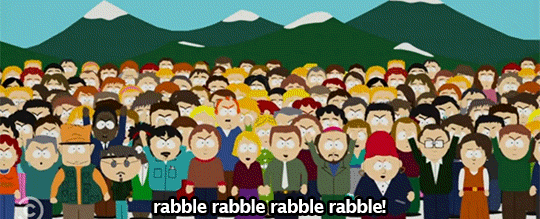
It’s fine. I’ll just continue to agree with everything Eleanor says while also wishing she would get off my screen. That makes the sense. It has to be because I was firmly not on the side of the English in Season 3, even though why the hell not? Damn those compelling pirates!
Historical tension
I spoke already of the bad feeling in the pit of my stomach about Anne Bonny and Calico Jack’s fates, but there’s another reason for that. Clearly this show is not committed to historical accuracy in terms of the lives of the “real” pirates they included; if they were, Anne Bonny would be 13, Jack would not get his own ship for 5 more years, Vane would have been tried in Port Royal, and Benjamin Hornigold’s dramatic end would have been at the hands of a hurricane. And even though I’d love for this Anne to ultimately live into her 80s on a Virginia plantation, I’m totally fine with the fictionalized versions of these figures getting new endings.

However, if Black Sails is truly supposed to feed right into Treasure Island, I’m wondering if that means I should expect gallows for the characters that don’t appear in Robert Louis Stevenson’s novel. To be fair, it’s set on Hispaniola, not New Providence, so the series could end with John and Billy (and probably Madi, let’s be honest) sailing off into the sunset, while the others remain in Nassau. So I guess there’s wiggle room, right?
Either way, it seems like Captain Flint will have to die for the events of Treasure Island to work, though if I‘m being honest, I don’t think I truly ever considered him living to the end of the series anyway.
I guess it just leaves me a little anxious, especially since history tells me Jack’s a goner, and themes and stuff almost requires Anne to go with him. Yeah…I’m just obsessing about my problematic fave, aren’t I? I don’t necessarily think Black Sails will be bound to such a strict interpretation, but can we please at least have nice things for Max?
Where’s Season 4?
Despite my underlying anxiety and the few elements that didn’t quite work for me, I simply cannot get enough of this show. I’m actually mad at myself for starting it so many months from its January return because the wait seems unbearable right now. So, good luck to anyone who viewed it live and haven’t had a new episode for half a year at this point.
It’s not a perfect show, by any means, but in some ways it makes engaging with its flaws even better. I actually care about the narrative and the characters, and it makes me happy to think deeply on this material. Plus, it does a lot well, and you can tell that there’s thought and an underlying sensitivity to the narrative crafted. I may have started Black Sails as a case study of a show “like” Game of Thrones, but frankly where both shows are right now, there’s just no comparison.
Images courtesy of Starz
The post Black Sails Finds its Wind and Doesn’t Look Back appeared first on Fandom Following.

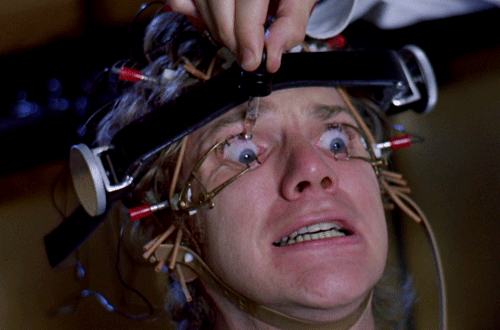 Y ahí es donde entra el docureality, un subgénero más low cost que una ensalada de caspa, una aberración televisiva que da sentido a nuestra pizza de piña y jamón y llena nuestro salón con una fenomenología 100% española: las surrealistas voces de los traductores-actores patrios. Diablos, estamos en la edad de oro de este formato. De hecho, hay canales consagrados por entero a él. Razón de más para repasar los docurealities más chalados que actualmente se emiten en España. Si también disfrutas con esta basura no te culpes: no hay mejor forma de tirar tu vida por la borda que esta.
Y ahí es donde entra el docureality, un subgénero más low cost que una ensalada de caspa, una aberración televisiva que da sentido a nuestra pizza de piña y jamón y llena nuestro salón con una fenomenología 100% española: las surrealistas voces de los traductores-actores patrios. Diablos, estamos en la edad de oro de este formato. De hecho, hay canales consagrados por entero a él. Razón de más para repasar los docurealities más chalados que actualmente se emiten en España. Si también disfrutas con esta basura no te culpes: no hay mejor forma de tirar tu vida por la borda que esta.











































































 Se acaban de conceder
Se acaban de conceder  Over the years, regular Pirate Bay visitors have seen plenty of scarcely dressed girls being featured on the site.
Over the years, regular Pirate Bay visitors have seen plenty of scarcely dressed girls being featured on the site. 

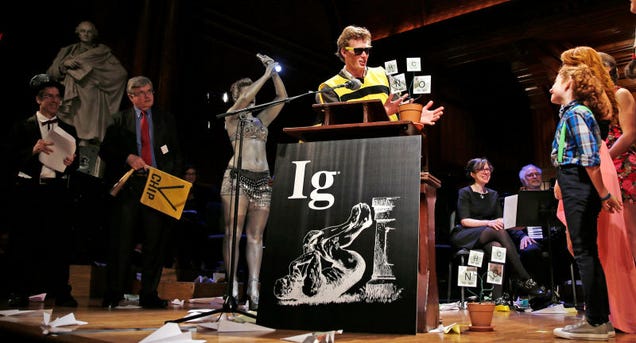


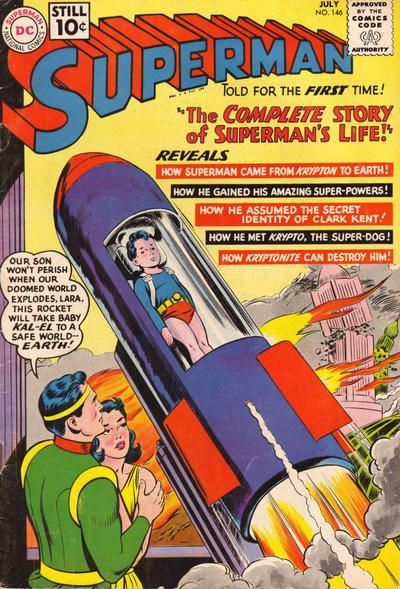 Thinking quickly, Uslan, who wore a Spider-Man T-shirt to the meeting, asked the administrator to recite the story of Moses: “Moses was an endangered Hebrew infant sent to safety in a river basket and recovered by a couple who raised him as their own. Later, he became a heroic figure to his people after learning his heritage.” Then Uslan asked him to recall Superman’s genesis: “Superman was an endangered Krypton son sent to safety by his parents in a rocket ship, then recovered by a couple who raised”—there, the dean cut himself off, and the 20-year-old became the world’s first professor of a college-accredited comic-books course.
Thinking quickly, Uslan, who wore a Spider-Man T-shirt to the meeting, asked the administrator to recite the story of Moses: “Moses was an endangered Hebrew infant sent to safety in a river basket and recovered by a couple who raised him as their own. Later, he became a heroic figure to his people after learning his heritage.” Then Uslan asked him to recall Superman’s genesis: “Superman was an endangered Krypton son sent to safety by his parents in a rocket ship, then recovered by a couple who raised”—there, the dean cut himself off, and the 20-year-old became the world’s first professor of a college-accredited comic-books course.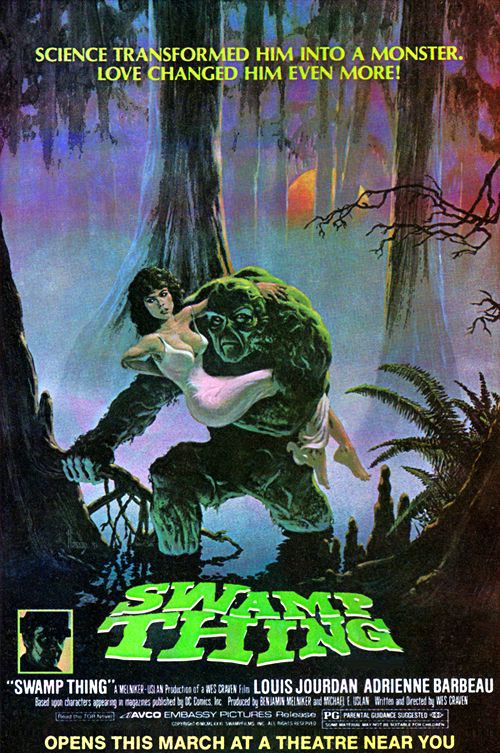 Eventually, Uslan and Melniker signed a deal to make Batman with the producers behind Midnight Express and A Star Is Born—but they still couldn’t get a studio on board. Meanwhile, Uslan needed cash to get by, so he and Melniker got a different project off the ground: Swamp Thing, a popcorn flick featuring a rubber-suited monster.
Eventually, Uslan and Melniker signed a deal to make Batman with the producers behind Midnight Express and A Star Is Born—but they still couldn’t get a studio on board. Meanwhile, Uslan needed cash to get by, so he and Melniker got a different project off the ground: Swamp Thing, a popcorn flick featuring a rubber-suited monster.
 (Image credit: Flickr user
(Image credit: Flickr user  The article above, by Camille Dodero, appeared in the the September 2015 issue of mental_floss magazine. It is reprinted here with permission.
The article above, by Camille Dodero, appeared in the the September 2015 issue of mental_floss magazine. It is reprinted here with permission.


